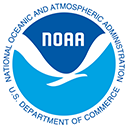About the State Climate Summaries
These NOAA State Climate Summaries were produced in response to a growing demand for state-level information in the context of the Third National Climate Assessment (NCA) and subsequent sustained activities. They consist of observed and projected climate change information and focus on aspects that are part of NOAA’s mission (mainly characteristics of the physical climate and coastal issues). The NCA activities derive from the U.S. Global Change Research Act (GCRA) of 1990. One of the activities spelled out in that Act is a quadrennial assessment that “analyzes current trends in global change, both human-inducted and natural, and projects major trends for the subsequent 25 to 100 years.” These state climate summaries support NCA activities and, deriving from the charge in the GCRA, contain information both on historical trends and scientific knowledge about potential future trends.
While the datasets and simulations in these state climate summaries are not, by themselves, new, (they have been previously published in various sources), these documents represent a targeted synthesis of historical and plausible future climate conditions for each U.S. state.
Each summary consists of a description of the historical climate conditions in the state, as well as that of the climate conditions associated with future pathways of greenhouse gas emissions.
All summaries underwent an anonymous review, with at least two expert reviews completed per state.
Historical Climate
The description of historical climate conditions for each state are based on an analysis of core climate data (the data sources are described in the supplementary online material). However, to help understand, prioritize, and describe the importance and significance of different climate conditions, additional input was derived from climate experts in each state, some of whom are authors on these state climate summaries. In particular, input was sought from the NOAA Regional Climate Centers and from the State Climatologists. The historical climate conditions are meant to provide a perspective on what has been happening in each state and what types of extreme events have historically been noteworthy, to provide a context for assessment of future impacts.
Future Scenarios
The future climate scenarios are intended to provide an internally consistent set of climate conditions that can inform analyses of potential impacts of climate change. The scenarios are not intended as projections as there are no probabilities for their future realization attached. They simply represent an internally consistent climate picture under certain assumptions about the future pathway of greenhouse gas emissions. By “consistent” we mean that the relationships among different climate variables and the spatial patterns of these variables derive directly from the same set of climate model simulations and are therefore physically plausible. The future climate scenarios are based on well-established sources of information. No new climate model simulations or downscaled data sets were produced for use in these state climate summaries.


